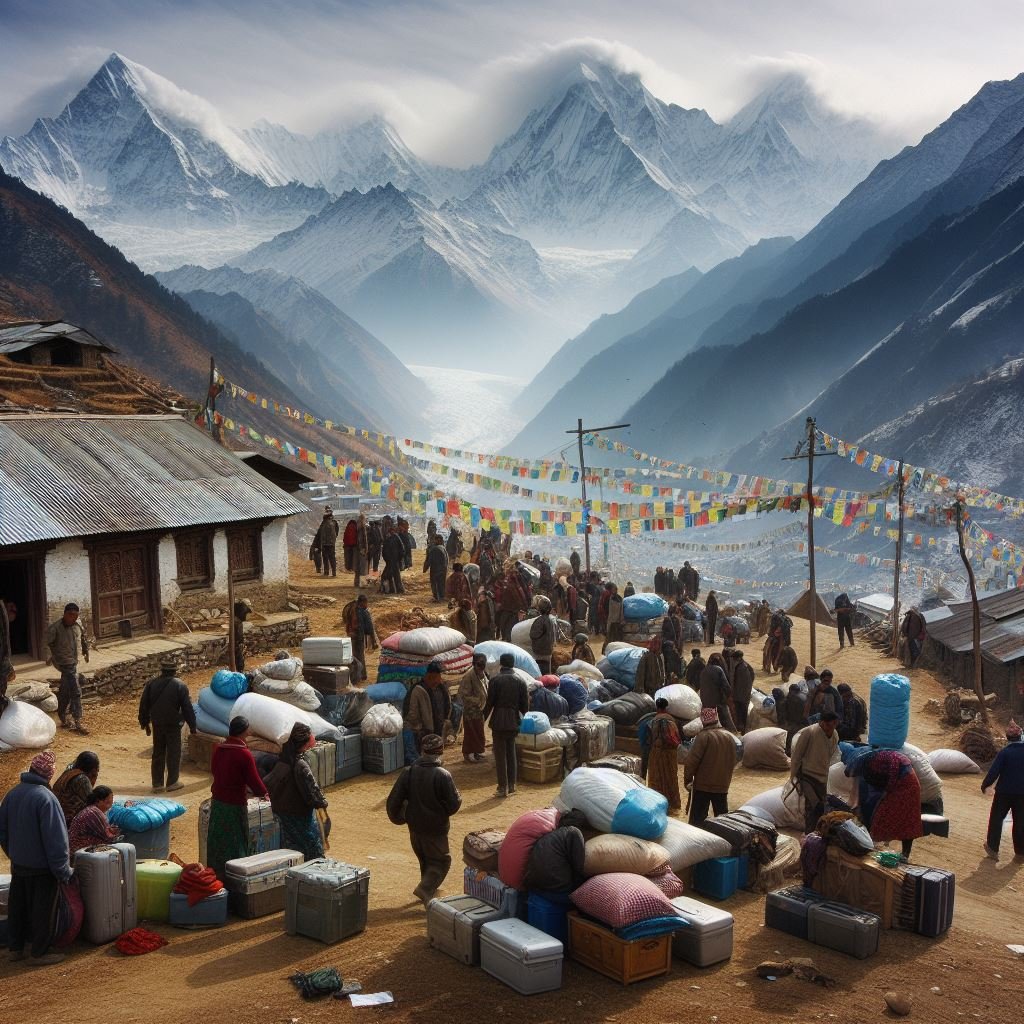Villager migration in Nepal

Nepal a country famous for its beautiful snow-capped Himalayan mountains, also has a harsh side. Cold winters, alongside harsh terrain, created a need for people to migrate.
The locals of Mustang (in Lomanthang, Ghami, Chhoser, Surkhang, and Chhonhup) would grow barley, wheat, buckwheat, and potatoes and complete the harvest by the second week of October so they prepare to leave the villages for their seasonal migration in the lowlands for at least four months.
People with health and age issues however stay in the high mountainous villages, while the schools in Upper Mustang run mobile classes in several places in Pokhara.
Similarly, the people of Manang migrate southward to avoid the cold in November but travel industry professionals remain until the end of the tourist season in the Manang district.
In low-income rural areas such as the village of Sindhupalchowk district, out of 60 students only half attend regular classes in Summer (April to August) due to their commitments with family chores. They usually go with their parents to the mountains to herd yak and sheep.
These villages lack local teachers because no one stays in the village after completing 10th grade.
In eastern Nepal, outward migration is an age old phenomenon- people migrate to Assam, Sikkim, and Bhutan for opportunities. Many even migrate out of Nepal as they are recruited into the British Army. The Gurkha send remittances and buy real estate in the Dharan-Itahari-Damak corridor in Terai but not in their traditional hometown.
There is a growing trend where villagers leave the village and migrate to urban spaces. In one case, within a short period of 14 years, 300 families out of 886 families moved out of two wards in Chaubise Rural Municipality. In some places, 90% of the villages are deserted.
There is a larger percentage of seniors, in villages, while youth have moved to cities to get better lives.
As health posts, schools, and ward offices are also being established- the outward flow has also decreased.
Some Rural Municipalities have announced a reward; a cow and Rs. 100,000 to each family that returns. The local government hoped the young educated men would be attracted to cash crops, irrigation, and agriculture.
Nepal’s new federal structure with empowered local government alongside the expansion of the road network has been accepted as a positive transformation of the country. However, empty rural spaces and stories could still be found in Nepal and could be an incredibly interesting story for an idea to film in Nepal.
“The tides of change; the empty villages of Nepal”.
Author
Kripendra Amatya, Researcher, Nepa~laya Productions
Editor
Dana Moyal Kolevzon, Director of International Relations, Nepa~laya Productions
Published Date
January 1, 1970



